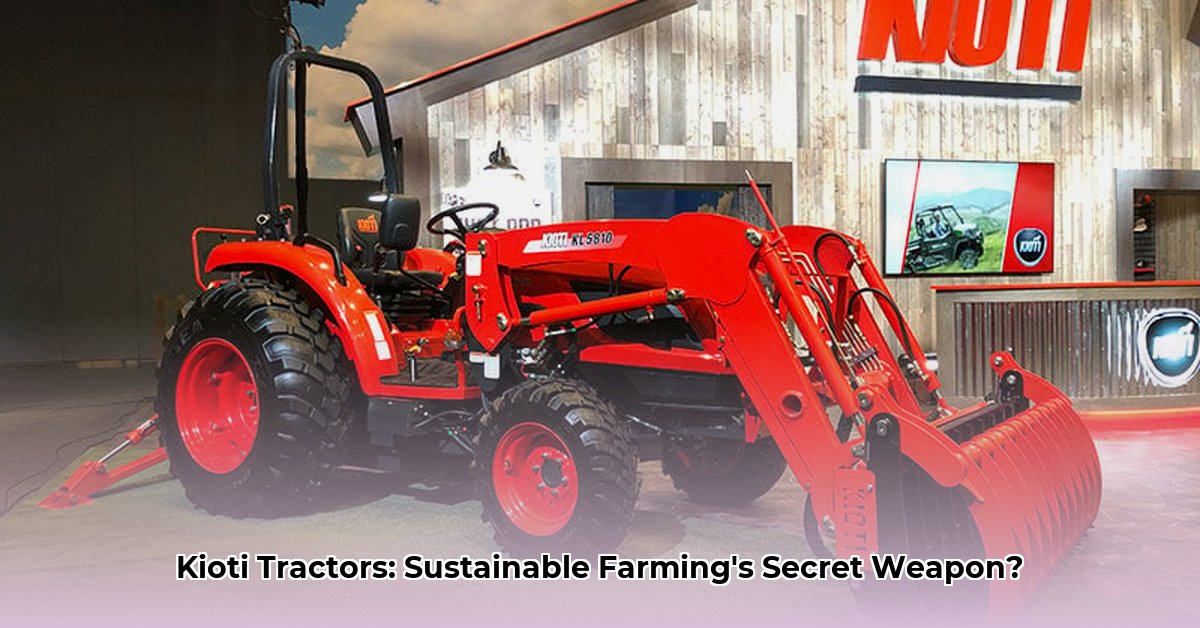
Kioti tractors are a familiar sight on farms worldwide, known for their reliability and performance. But where are these powerful machines actually manufactured? Understanding Kioti's global manufacturing footprint is crucial for comprehending the lifecycle of these tractors, from their origin to their impact on sustainable agriculture. This article explores Kioti's production across South Korea, the US, and China, analyzing its strategic implications and environmental considerations. For comparison, learn more about other tractor brands like TYM: TYM Tractor Manufacturing.
Kioti's Global Manufacturing Strategy: A History of Growth
Kioti's journey begins with the Daedong Corporation, founded in South Korea in 1947. From humble beginnings, Daedong strategically expanded its manufacturing capabilities, establishing a global presence. This expansion wasn't merely about increasing production; it was a calculated response to market demands, resource availability, and labor costs. This strategic approach reflects a sophisticated understanding of global supply chains and their complexities. Isn't it fascinating how such a calculated approach has shaped the modern farming landscape?
Kioti Tractor Manufacturing Locations: A Detailed Look
Kioti's manufacturing isn't confined to a single location. Instead, their production is strategically distributed across three key regions:
South Korea: The Foundation of Innovation
South Korea serves as Kioti's original home base and remains a critical center for research, development, and manufacturing. This allows for advanced technological innovation and quality control. The presence of crucial engineering and design resources here underpins the brand's reputation for reliable and durable equipment.
The United States: Local Production, Faster Delivery
Kioti's US manufacturing facilities represent a strategic move to shorten supply chains and expedite delivery to American customers. This proximity significantly reduces transportation costs and time, offering farmers quicker access to needed equipment. How significant is this strategy in ensuring timely access to machinery during critical farm seasons?
China: A Cost-Effective Manufacturing Hub
China plays a significant role in Kioti's global manufacturing network. Its vast manufacturing infrastructure offering cost-effective production capabilities. This strategy allows Kioti to offer competitively priced tractors to a broader market, while potentially raising questions about ethical labor standards and environmental impact.
Sustainability and Kioti's Global Footprint: The Environmental Impact
While Kioti's global manufacturing network could boost efficiency, it also raises concerns about its environmental footprint. The transportation of materials and finished products across continents contributes significantly to greenhouse gas emissions. Similarly, the sustainability of manufacturing processes in each location requires scrutiny. Factors like energy consumption, waste management, and ethical sourcing of raw materials are all critical aspects that need greater transparency from the company. What initiatives is Kioti taking to minimize its environmental impact across its global operations?
Kioti in the Competitive Landscape: A Comparative Analysis
Kioti competes with established giants like John Deere and Kubota. Its global manufacturing strategy allows Kioti to compete on price and delivery, especially within its niche of smaller and medium-sized tractors. However, a thorough comparative analysis of their global manufacturing strategies and their respective environmental impacts is necessary to provide a complete and objective assessment. How does Kioti's approach to sustainability compare to its competitors' commitments?
The Future of Kioti and Sustainable Agriculture: Challenges and Opportunities
The agricultural industry faces increasing pressure to adopt more sustainable practices. Kioti's future success depends on its ability to adapt and integrate sustainable manufacturing methods. This includes exploring alternative fuel technologies like electric or hybrid tractors, optimizing energy efficiency in its factories, and adopting more responsible sourcing for materials. Will Kioti lead the way in environmentally conscious tractor manufacturing, or will it lag behind its competitors?
Key Takeaways:
- Kioti's global manufacturing strategy balances cost efficiency with market proximity.
- The environmental impact of this strategy needs further transparency and assessment.
- Kioti's competitive position depends on its ability to balance cost, delivery, and sustainability.
- The future of Kioti, and the broader agricultural machinery industry, relies on greater commitment to sustainable practices.